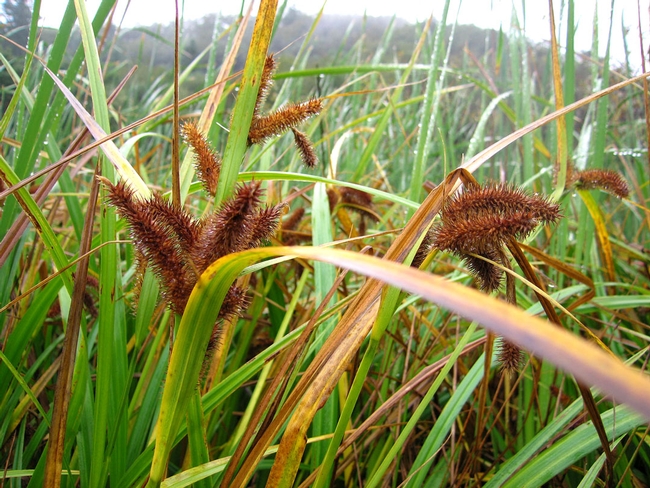In the family Cyperaceae, the species of sedge called Bristly Sedge or Longhair Sedge (Carex comosa Boott), is a component of the wetland plant community near the UC Hopland Research & Extension Center's natural sag ponds. Common elsewhere in North America, this plant is considered rare or endangered in California by the Native Plant Society. It is a state-protected plant under the California Environmental Quality Act (CEQA).
This wetland plant prefers freshwater lake margins where it can tolerate water up to about one-foot deep. Its drooping spikes have a "bottle brush" appearance atop stems that can be 20 to 40 inches tall. Bristly sedge can be a long-lived plant, spreading by seeds and rhizomes, and sometimes is quick to become established in recently exposed "gaps" in wetlands.
Threats to this taxon include changes in water levels due to damming or draining, invasion/competition by certain introduced grasses, and shoreline development. At UC-HREC the plant is only found in two small areas on the edge of a single lake. However, that population appears healthy and robust. Botanist Kerry Heise was the discoverer of this HREC population around the year 2000.
